#la granja de san ildefonso
Photo
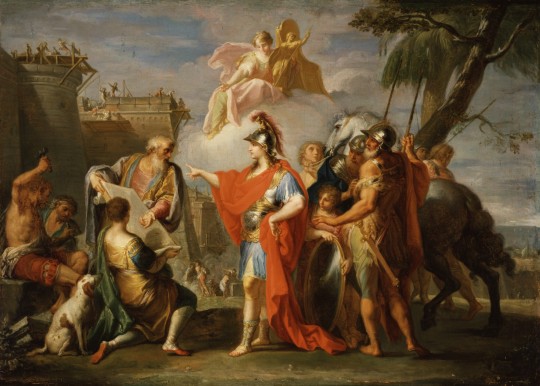
Alexander the Great Founding Alexandria
Placido Costanzi (Italian; 1702–1759)
1736–7
Oil on canvas
The Walters Art Museum, Baltimore, Maryland
Modello painted in preparation for one of the large canvases commissioned from the artist for the throne room of King Philip V of Spain in the royal palace of La Granja de San Ildefonso
Alexander gives instructions to the Greek architect Dinocrates. Behind them, massive walls are under construction.
#Placido Constanzi#Constanzi#Italian art#Italian artists#Italian painters#Italian paintings#Baroque art#Italian Baroque#ancient Egypt#Alexandria#Alexander the Great#Dinocrates#modello#La Granja de San Ildefonso#city#cities#ancient cities#ancient world#classical world#dogs#horses#architects#helmets#walls#1730s#18th-century art#18th-century artists#18th-century Italian art#18th-century Italian artists#architectural plans
14 notes
·
View notes
Photo
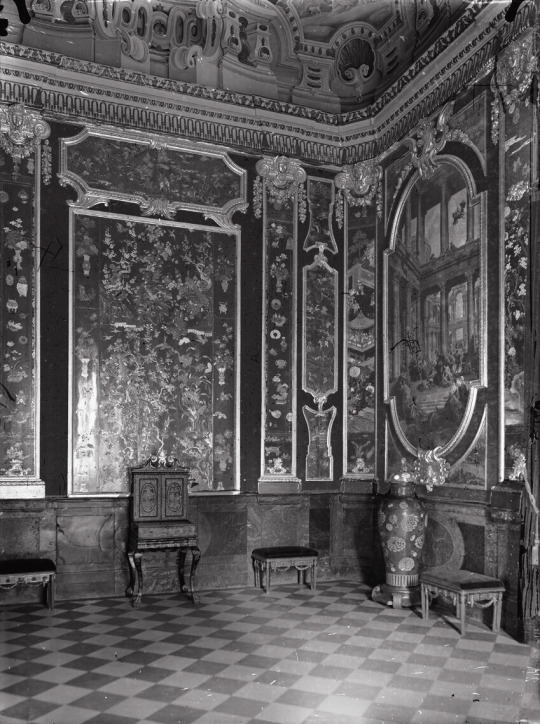
Salón de los Charoles, Palacio Real de la Granja de San Ildefonso.
#spain#segovia#la granja de san ildefonso#palacio real#royal palace of la granja de san ildefonso#art#architecture
5 notes
·
View notes
Text
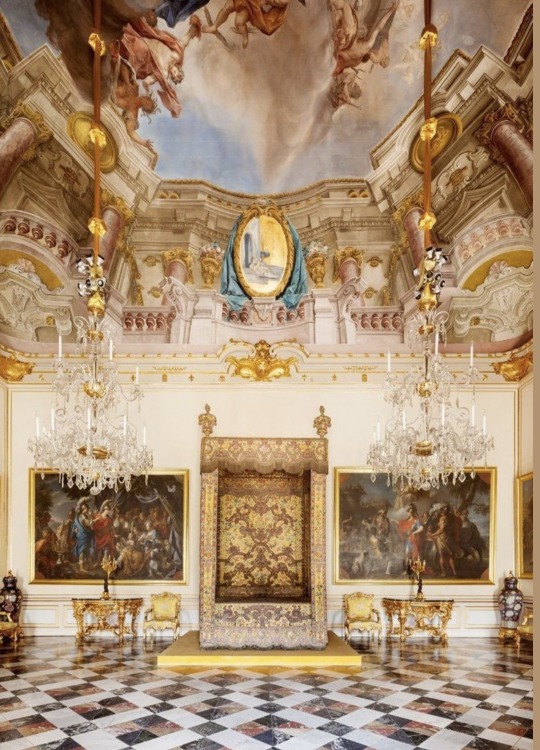
7 notes
·
View notes
Text

Aguadoras ante la diligencia que hacía el recorrido entre la Granja de San Ildefonso y Segovia. España, 1885
Foto: José Regueira
24 notes
·
View notes
Text
For the Princess of Asturias 18th birthday bells will ring in all Royal Sites and Palaces and churches in Asturias on October 31st, 2023.
Pictured are the Royal Site of the Monastery of Santa María la Real de las Huelgas in Burgos, Oviedo's Cathedral (Asturias), Covadonga Basilica (Asturias) and the Royal Site of La Granja de San Ildefonso in Segovia.
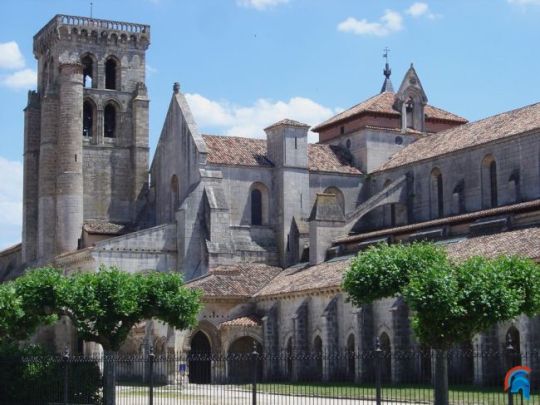



21 notes
·
View notes
Text
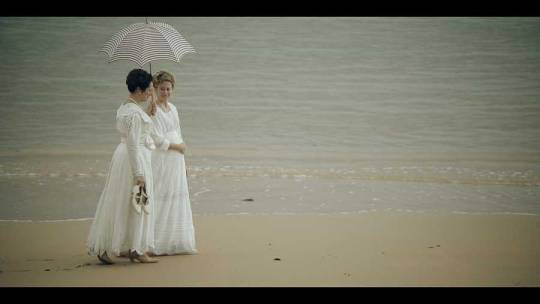
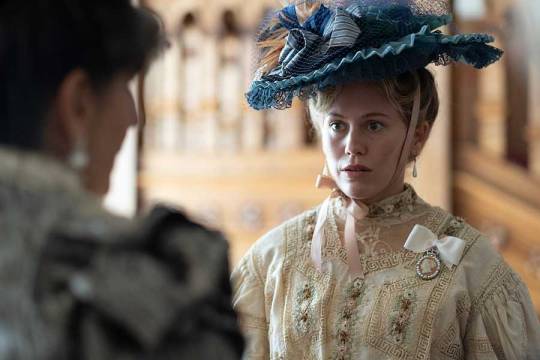


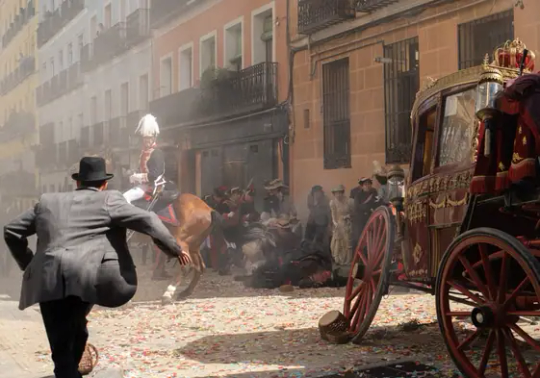



Upcoming series: Ena
In September, the filming of Ena began, a biographical series that will focus on the life of Victoria Eugenie of Battenberg, queen of Spain through her marriage to Alfonso XIII between May 31, 1906 and April 14, 1931, after being the monarchy deposed later by the proclamation of the Second Republic. Great-grandmother of the current king Philip VI of Spain, of whom she was godmother at his baptism. Throughout six chapters, the series will tell the life of Victoria Eugenie and at the same time offer a portrait of a time that changed the world, the first half of the 20th century, from 1905 to 1945. Born on October 24, 1887 in Aberdeenshire, Scotland, Ena was the daughter of Henry of Battenberg and Princess Beatrice, youngest daughter of Queen Victoria of the United Kingdom and Prince Albert of Saxe-Coburg and Gotha. Her godmother was Eugenia de Montijo, empress consort of France as Napoleón III's wife. The name of the series comes from what her friends and family called her since she was little, Ena.
The fiction is based on the novel of the same name by Pilar Eyre. Javier Olivares, who was behind the acclaimed Isabel and El Ministerio del Tiempo, will be the showrunner and plot manager for Ena. In addition to Olivares, the script is written by Isa Sánchez, Daniel Corpas and Pablo Lara Toledo. The series will be directed entirely by women: Anaïs Pareto, director of the series as a whole, in addition to four episodes, and Estel Díaz, who will direct two episodes.
“Ena is the portrait of historical moments that seem distant but are not so far away, because without them we would not understand the times we live in now,” Olivares declares in the press release sent by TVE. The writer and screenwriter remembers that Victoria Eugenie “fought to be happy in a bitter time, in which she witnessed two world wars, a civil war and a great pandemic, the tortuously called Spanish flu.”
For Pilar Eyre, author of the novel, she was "an extraordinary woman: cultured, supportive, liberal-minded, modern and very loyal." And she is excited because "finally all Spaniards can know" the story of a "misunderstood" woman. in their time, which they will always consider foreign." It is a fiction co-produced by RTVE with Ena La Serie AIE, La Cometa TV and Zona App. José Pastor, director of Film and Fiction at RTVE, has pointed out that "it is a "RTVE is proud to be able to portray this interesting historical character, from the point of view of two women directors and with Javier Olivares as showrunner, in one of its best series."
The Spanish actress of Anglo-Danish descent Kimberly Tell will play Ena and Joan Amargós will play Alfonso XIII. For her part, Elvira Mínguez will play Maria Christina von Habsburg-Lothringen, mother of Alfonso XIII. The cast is completed by Lucía Guerrero (Beatrice of Saxe-Coburg and Gotha), Raúl Mérida (Alfonso of Orleans and Bourbon), Juan Gea (Álvaro Figueroa y Torres, Count of Romanones), María Morales (María del Carmen Angoloti y Mesa, Duchess of Victoria), Pedro Mari Sánchez (Rodrigo de Saavedra y Vinent, Marquis of Villalobar), Luisa Gavasa (Eugenia de Montijo) and Joaquín Notario (José de Saavedra y Salamanca, Marquis of Viana)
Mariano Peña will play Miguel Primo de Rivera; Jaume Madaula will play the anarchist Mateo Morral, author of the attack committed at the royal wedding; Tomás del Estal will be Emilio María de Torres y González-Arnáu, and Ángel Ruiz will once again give life to Federico García Lorca, a character he already played in El Ministerio del Tiempo, among others.
The series will be filmed entirely in natural exteriors and interiors, like the Royal Palace of Madrid, the Palace of La Granja de San Ildefonso (Segovia), the Palace of Santoña (Madrid), the Palace of Fernán Núñez (Madrid), the Fort of San Francisco (Guadalajara) and the Magdalena Palace (Santander), built in 1911 by the City Council as a tribute to the monarchs and where Ena spent a good part of her summers in Spain, accompanied by the Royal Family. Filming for the series will continue until the end of December.
~~~~~~~~~~~~~~~~~~~~~~~~~~~~~~~~~~~~~~~~~~
So, the Magdalena Palace is going to be an important location during the series as a summer palace, the main filming location in Gran Hotel, and in that series Ena appeared in the episode 3×13, played by Aída Filx.
Apart from that, are we getting an Olivaresverse (XD)? Most likely not, and it's just references about his previous works as a showrunner, but there are connections between Isabel, Emdt and Ena: Michelle Jenner starring Isabel as Isabella I of Castile, then appearing in a couple of scenes in Emdt episode 1×04 and being an important figure in the lore as the foundress of the ministry (& Eusebio Poncela playing as Cisneros in both series, and also he played Cisneros in the film La Corona Partida and the Carlos Rey Emperador series); Alfonso XIII is a descendant of Isabella I of Castile; Ángel Ruiz appeard as Lorca in Emdt in 4 episodes and now he is on Ena playing as Lorca again, we don't know yet how much screentime he will get or which will his role be (secondary character most likely), but it's great to see more about him!
#Ena#period dramas#upcoming series#ena tve#victoria eugenie of battenberg#maria christina von hasburg#alfonso xiii of spain#kimberley tell#joan amargós#rtve series#pilar eyre#javier olivares#anaïs pareto#estel diaz#federico garcía lorca#ángel ruiz#elvira míngez#maria christina von hasburg-lothringen#lucía guerrero#beatrice of saxe-coburg and gotha#raúl mérida#alfonso of orleans and bourbon#juan gea#álvaro figueroa y torres#maría morales#maría del carmen angoloti y mesa#pedro mari sánchez#rodrigo de saavedra y vinent#luisa gavasa#eugenia de montijo
19 notes
·
View notes
Photo








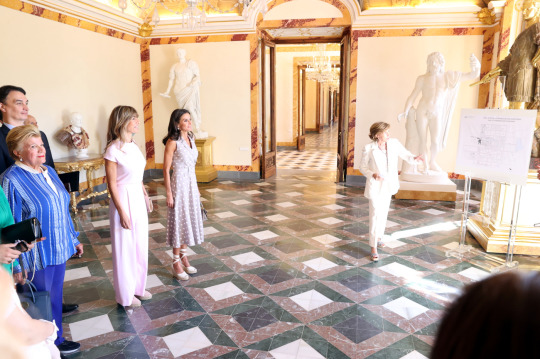
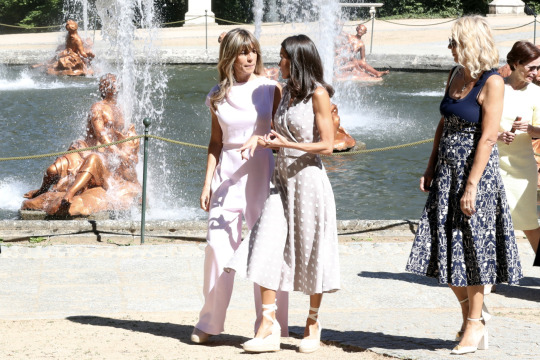
June 29, 2022: Queen Letizia visited the Royal Palace of La Granja de San Ildefonso with the partners of the participants in the NATO Summit
46 notes
·
View notes
Photo

Palacio Real de La Granja de San Ildefonso
20 notes
·
View notes
Text
Pasaje de la vida de San Francisco de Asís atribuido a Ludovico Carracci. San Francisco aparece ataviado con un burdo hábito de color pardo, arrodillado ante dos ángeles, uno de los cuales porta una copa que muestra al santo y el otro se inclina en actitud de ofrecerle una casulla que el santo parece rechazar haciendo referencia a su humildad (Fotografía cedida por el Museo Provincial de Lugo, institución depositaria de la obra).

Óleo Lienzo
ángeles San Francisco de Asís 1585
Atribuido a Carracci,
San Francisco y dos ángeles
Finales del siglo XVI oleo Alto: 24 cm; Ancho: 19 cm
Procedencia Colección Real colección Carlo Maratti, Roma, 1712; adquirido por Felipe V, 1723, nº 161; col. Felipe V, Palacio de La Granja de San Ildefonso, Segovia, 1727; col. Felipe V, La Granja, 1746, nº 250; La Granja, 1774, nº 285; Palacio de Aranjuez, Madrid, despacho y dormitorio del rey, 1818

3 notes
·
View notes
Text
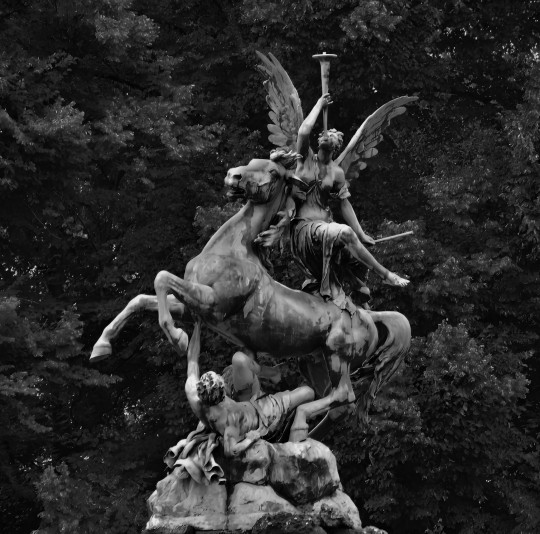
Der Fama-Brunnen befindet sich im Parterre vor dem Schloss Herrenchiemsee und wurde von Rudolf Maison zwischen 1884 und 1885 geschaffen. Er ist nach dem Vorbild eines Brunnens im Königspalast La Granja de San Ildefonso in Spanien gestaltet worden.
Zu sehen ist die geflügelte Figur des Ruhmes, bekannt als Fama, die auf Pegasus reitet.
Die Figur der Fama ist eine allegorische Figur aus der römischen Mythologie, die oft als Verkörperung des Ruhms und der öffentlichen Meinung dargestellt wird.
In diesem Fall symbolisiert sie die Verbindung zwischen dem König Ludwig II von Bayern und seiner kulturellen Leistungen, mit dem damit einhergehenden Ruhm, den er dafür erlangt hat.
6 notes
·
View notes
Photo

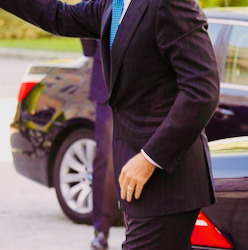


Through the Years → Felipe VI of Spain (1,161/∞)
10 October 2011 | Prince Felipe of Spain arrives at La Granja de San Ildefonso Palace for the opening of "Altos Responsables del Patrimonio Mundial" meeting in Segovia, Spain. (Photo by Carlos Alvarez/Getty Images)
#Prince Felipe#Prince of Asturias#King Felipe VI#Spain#2011#Carlos Alvarez#Getty Images#through the years: Felipe
2 notes
·
View notes
Photo
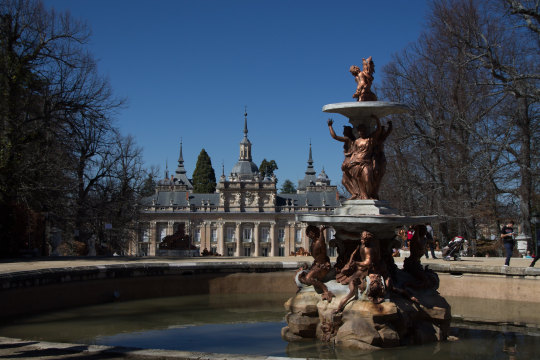
Fuente de las Tres Gracias, La Granja de San Ildefonso (by Roberto Vizcay).
#spain#segovia#la granja de san ildefonso#palacio real de la granja de san ildefonso#royal palace of la granja de san ildefonso#art#architecture
3 notes
·
View notes
Text

Palacio Real de La Granja de San Ildefonso, Madrid, España.
5 notes
·
View notes
Text
Farinelli, il castrato (1994)
Informe

De inicio a fin, esta película nos muestra una escenificación de la nueva vida en el Barroco, donde el drama, el teatro, la extravagancia, lo inusual y la tragedia… nos hace compañía a lo largo del filme, a medida que el señor Carlos Broschi o Farinelli, vive su vida.
La escenografía nos muestra una visión particular y realista del Barroco, nos mete de lleno en ese ambiente y nos da un vistazo de las muestras artísticas de la época, especialmente de la música a través del teatro y la ópera, ayudándonos a entender, un poco más, la importancia o el peso que representaba el arte en aquel entonces.
Sinceramente, debe haber sido sublime y un privilegio, tener la oportunidad de presenciar y disfrutar de la interpretación dramática y musical del mismo Farinelli. Su canto, y la escenificación de este, en conjunto con la orquesta, logran una experiencia teatral completa. Tiene el sello del Barroco por todos lados.
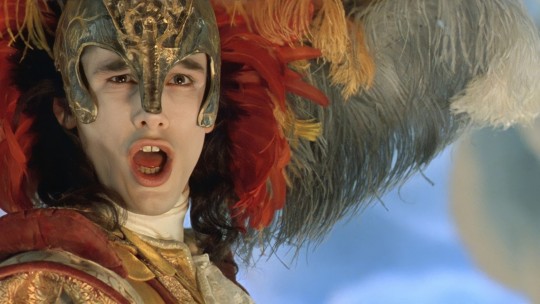

Es interesante ver los distintos espacios ambientados: como sucede al principio del filme, donde vemos la plaza como un espacio de entretenimiento para el disfrute del público, similar a un escenario al aire libre. Como un símbolo para representar el poder civil. Así mismo, los espacios verdes también están presentes. Aunque solo aparecen como vistazos de los jardines que componen el complejo del Palacio Real de Felipe V.
Por otro lado, el haber nacido en la época barroca, dónde la música tomó auge después del nacimiento de la ópera como espectáculo, este señor prácticamente vivió de gira en gira compartiendo su voz y arte con el mundo. Gracias a la delicadeza de su voz por ser castrato, estuvo vinculado por muchísimos años en el entrenamiento de la realeza española.


El registro vocal de Farinelli es de otro mundo, es impresionante su capacidad para conmover al público. Canta con tanto sentimiento, que pareciera sacudir hasta lo más profundo del alma. Aquí encaja la frase en donde dice que: "La mejor música, debe ser capaz de tocar el corazón" y al final, eso es el arte, aquel fenómeno capaz de despertar algún tipo de emoción. Sabiendo esto, vemos que el Barroco sigue un esquema similar, porque nos hace sentir algo, nos mantiene eufóricos y expectantes, en donde los espacios se conciben para ser disfrutados.

Lo mismo sucede cuando dice: "Necesito una música capaz de despertar ese fragmento del infinito que duerme en el fondo” esto es fácilmente comparable con la nueva tendencia del Barroco, que se caracteriza por la emocionalidad, la espectacularidad y la escenografía. Esa nueva intención teatral que busca representar el artista en sus obras. Que, incluso, se ve envuelta en la propia arquitectura.
Las plazas, los teatros, las escaleras, los salones de la corte y las habitaciones de los palacios, que van apareciendo en el transcurso del filme, todos estos, son espacios que contribuyen a darnos una idea más clara, de la vida que era llevada en aquel entonces.

El Palacio Real de la Granja de San Ildefonso
6 notes
·
View notes
Photo

Cantina de la Real Fábrica de Vidrio de La Granja de San Ildefonso. #lagranjadesanildefonso #segovia #españa #bnw #fabricadevidrio https://www.instagram.com/p/CeAeGLSK6P2/?igshid=NGJjMDIxMWI=
2 notes
·
View notes
Text
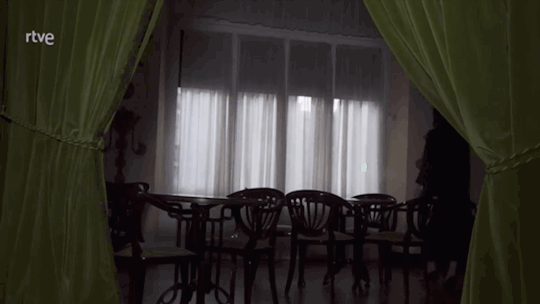





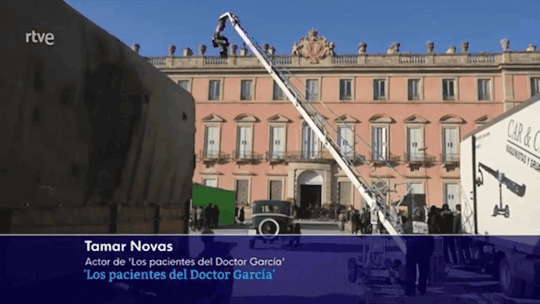

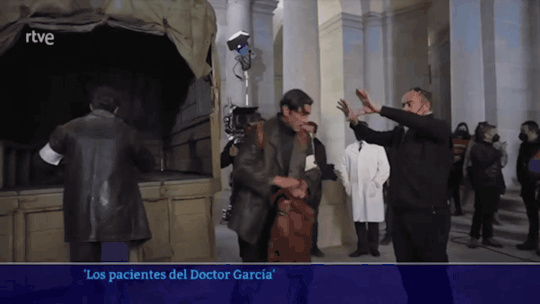
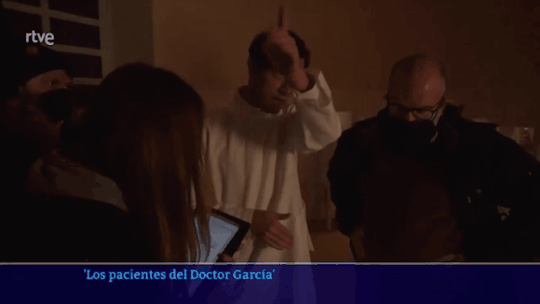
Other parts of the filming.
About the filming locations, in the videos there are shown the palace of El Pardo and the Militar Casino of Gran Vía, both in Madrid, and the pink palace is the Riofrío Palace in La Granja de San Ildefonso, near Segovia.
@asongofstarkandtargaryen
#los pacientes del doctor garcía#filming#period dramas#series#verónica echegui#tamar novas#javier rey
3 notes
·
View notes